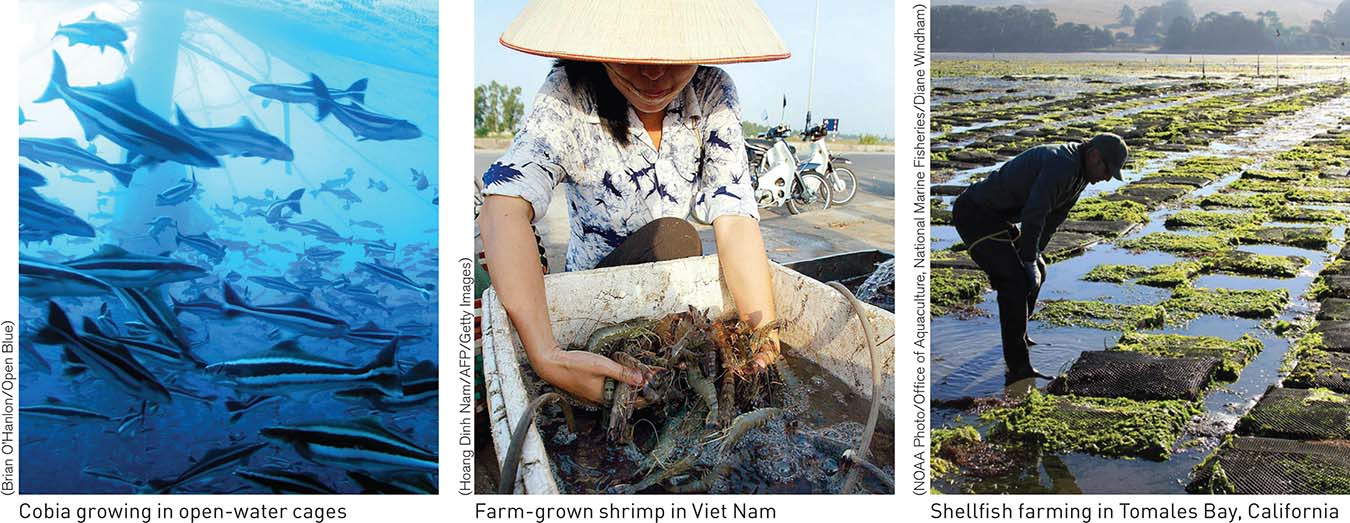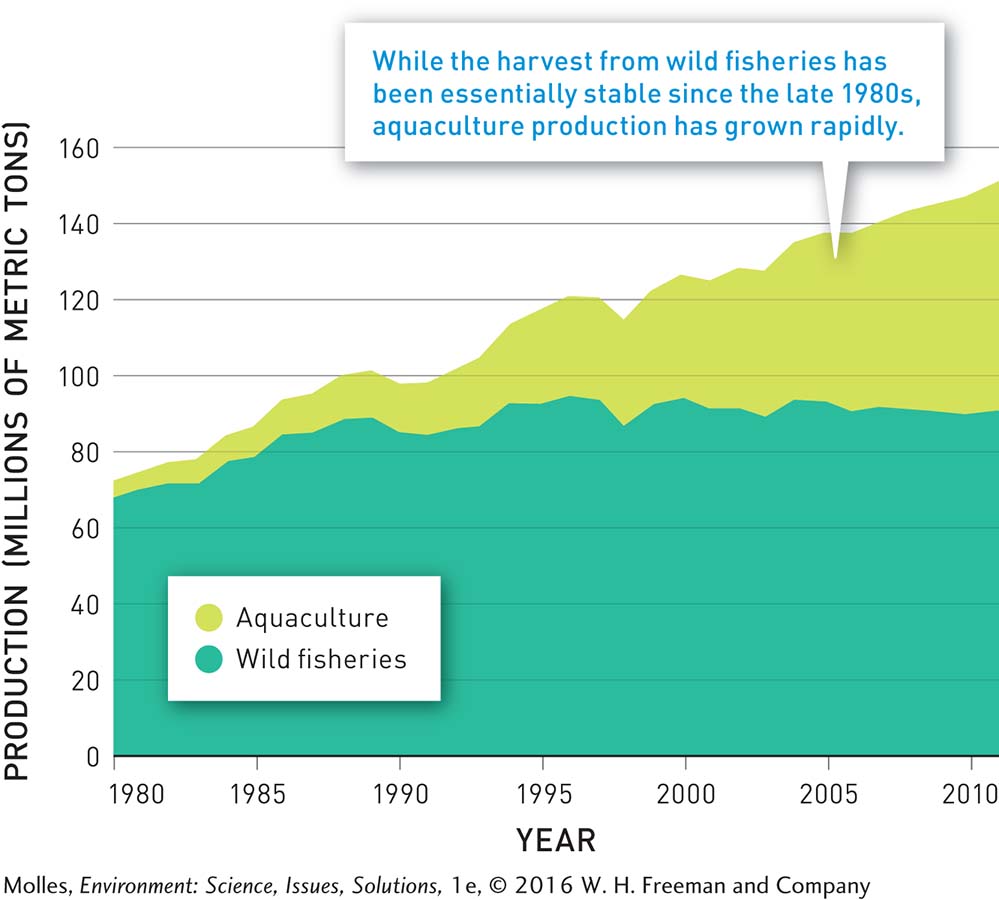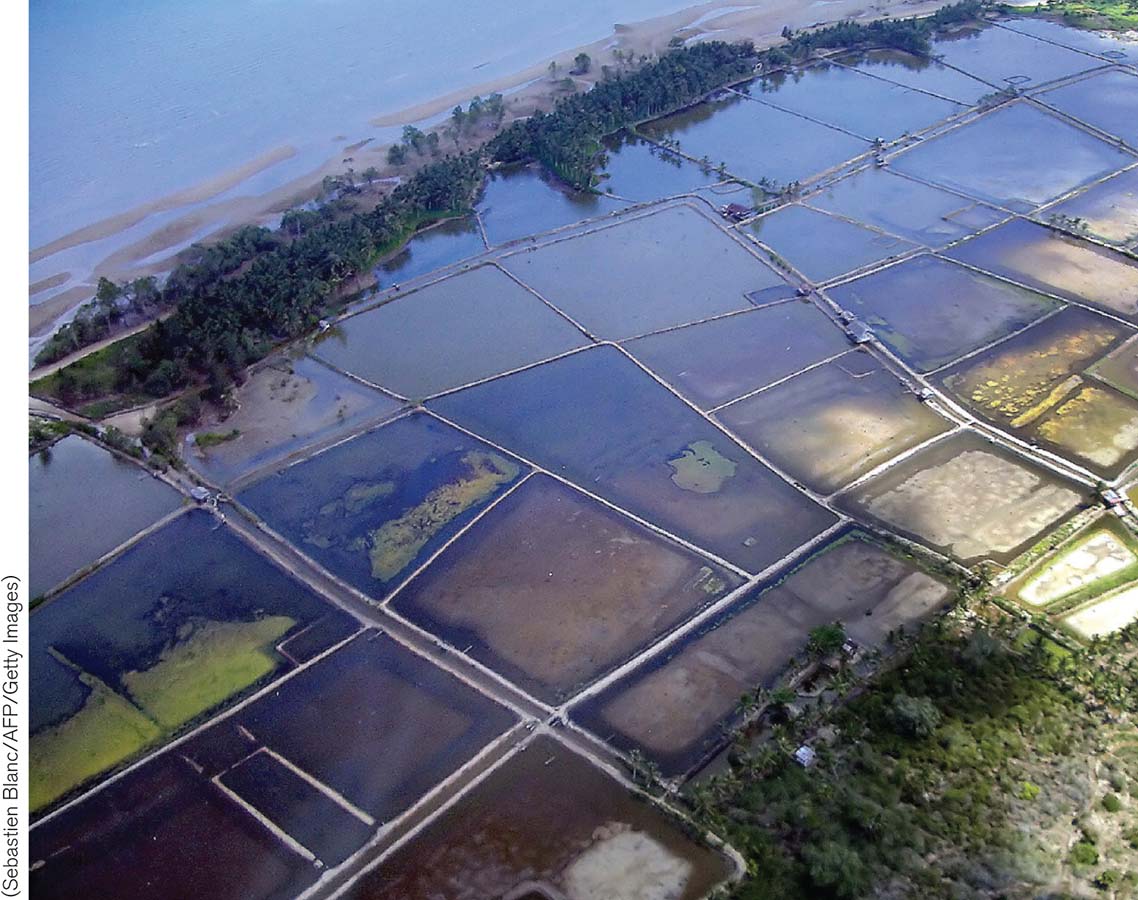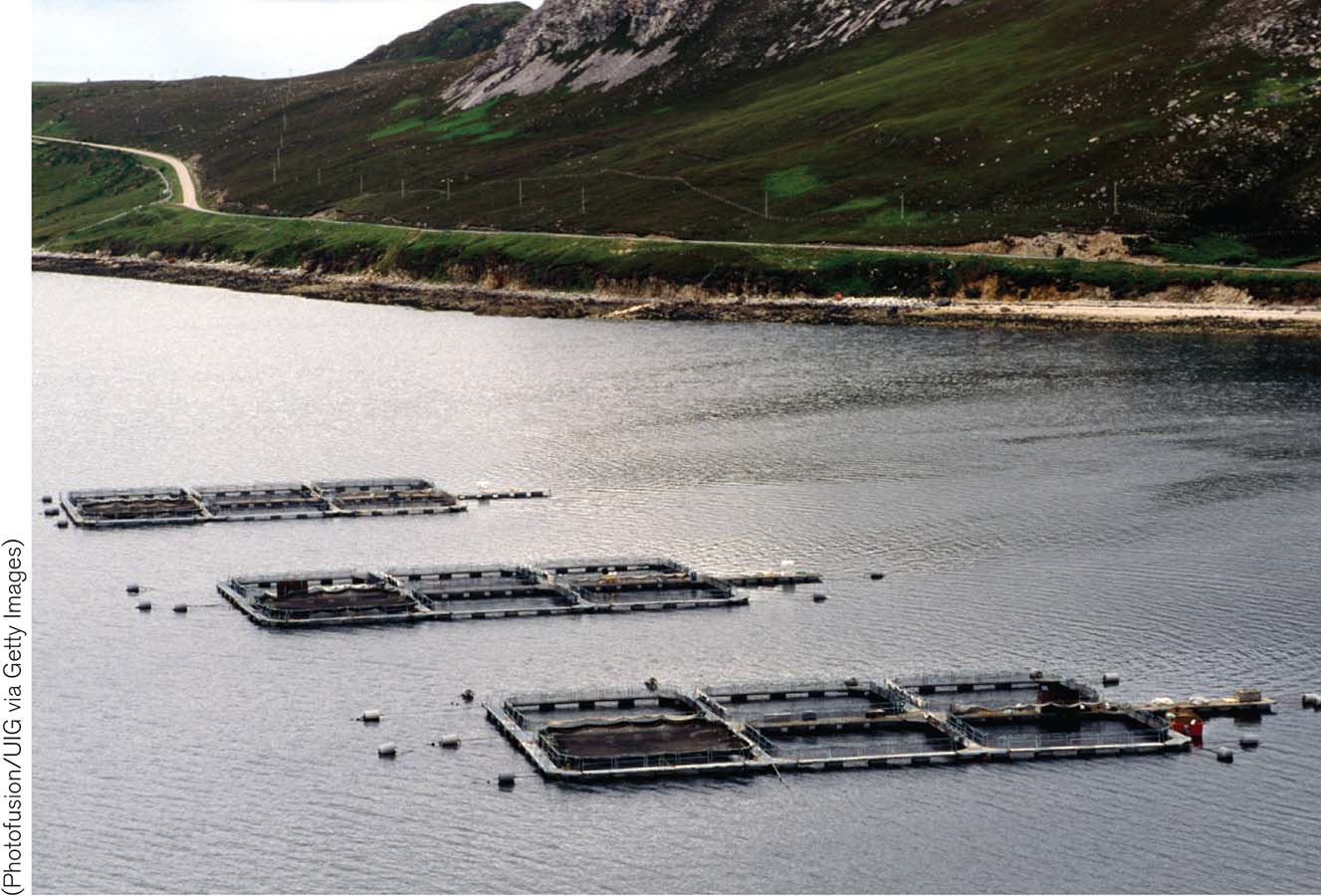8.6 Aquaculture can pollute aquatic environments and threaten wild fish populations
Wild fish stocks have declined and the commercial harvest of fish from oceans has reached a plateau, so the seafood industry has turned to aquaculture (see page 230) to meet increasing demand for seafood (Figure 8.17). Over the past three decades, aquaculture production has increased by about 9% annually, a growth rate exceeding that of all other forms of food production. By 2011 this resulted in more than 40% of total fisheries production (Figure 8.18).


Aquaculture occurs in marine, brackish, or freshwater environments all over the world. Farmers raise fish in ponds or in mesh cages suspended in water, while shrimp and crabs are generally grown in ponds or tanks. In intensive aquaculture, farmers feed fish and crustaceans specially formulated diets for optimum growth. By contrast, filter-
Problems with Cultured Fish and Shellfish
Critics of aquaculture point out that in all but the most secure systems, some of the organisms being cultured will escape into the wild. For example, cage-
Currently, there are no genetically modified varieties of fish used in aquaculture. One company, AquaBounty Technologies based in Massachusetts, is seeking approval from the U.S. Food and Drug Administration (FDA) for its faster-
Water Pollution
Aquaculture can also be a significant source of water pollution. As in agriculture on land, runoff from fish and shellfish feeding operations contains nutrients, especially nitrogen and phosphorus, which can produce noxious algal blooms that impair water quality and can kill wild fish. Aquaculture waste may also contain enough organic matter to deplete oxygen supplies in waters receiving the waste, again potentially resulting in fish kills.
Clearing Mangrove Forests

If GM Atlantic salmon are approved for human consumption, what safeguards should be used to prevent their escape and thus potential mating with wild salmon?
Shrimp farms are increasing pressure on mangrove forests, one of the most valuable and endangered tropical ecosystems on Earth. Mangrove forests grow in coastal waters, where they protect coastal areas from storm surge and may protect against tsunami damage. The roots of mangroves also provide protection from predation for young fish, so they additionally act as nurseries that enhance the productivity of coastal tropical fisheries. Mangroves also happen to be desirable locations for shrimp farms because mangroves grow along the shores of warm tropical oceans in soft sediments ideal for pond building.
As the pond culture of shrimp has increased from 72,000 metric tons (83,000 tons) in 1980 to 2.5 million metric tons (2.8 million tons) in 2009, so has the clearing of mangrove forests (Figure 8.19). Shrimp farms currently account for about 10% of total mangrove loss, along with urbanization, agriculture, and removal for fuel and construction. Globally, approximately one-

Disease and Parasite Transfer to Wild Fish
One serious issue with aquaculture is that fish farmed at high densities are highly susceptible to parasites and pathogens, which can then be transmitted to wild stocks. For instance, areas with cage-

Feed for Aquaculture and Wild Fish Populations

Could the small fish used for fish meal in aquaculture be used to feed undernourished human populations instead of producing fish in aquaculture?
While aquaculture may appear to be a low-
Some 20 to 30 million metric tons (22 to 33 million tons) of forage fish are harvested each year for aquaculture feeds. This number represents between one-
Think About It
What do aquaculture and land-
based, concentrated animal feeding operations (CAFOs, Chapter 13, page 407) have in common? How do they differ? How does the presence of close wild relatives affect the potential for intensive culturing of fish and shellfish to have negative impacts?
How can intensive aquaculture affect marine food webs?
8.4–8.6 Issues: Summary
The capacity of humans to deplete marine populations first became apparent with population declines of the great whales and many other marine animals, including fish. Fisheries collapse has become a global problem, with over 25% of commercial fish stocks around the world reduced to less than 10% of their former abundance because of overexploitation. Fisheries collapse is likely tied to overexpansion of fishing fleets and competitive approaches to fishing.
Damming rivers and regulating their flows have far-